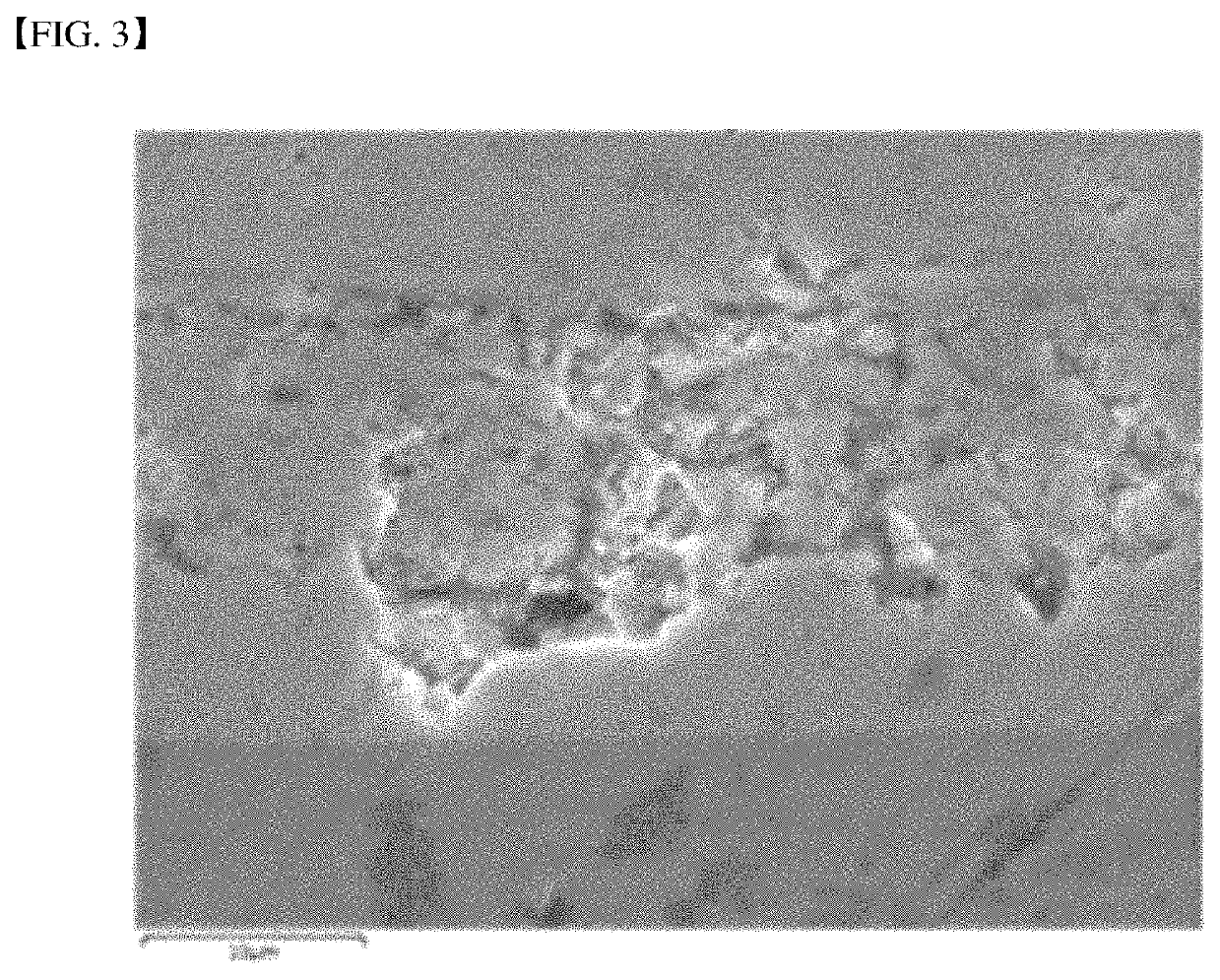Metal paste and thermoelectric module
a technology of thermoelectric modules and metal paste, which is applied in the direction of soldering apparatus, manufacturing tools, and capacitors, etc., can solve the problems of difficult to drive a thermoelectric module using a pb-based solder paste, the limitation of the solder paste in driving a thermoelectric module, and the inability to achieve sufficient adhesive properties, excellent thermal and electrical properties
- Summary
- Abstract
- Description
- Claims
- Application Information
AI Technical Summary
Benefits of technology
Problems solved by technology
Method used
Image
Examples
example 1
[0059](1) 27.3% by weight of Ni μmpowder (0.6 μm), 66.7% by weight of Sn powder (5-10 μm), 1% by weight of sodium stearate, and 5.0% by weight of dihydro terpineol were mixed to prepare a metal paste.
[0060](2) A thermoelectric module was prepared by using a skutterudite-based thermoelectric semiconductor as a thermoelectric material, and primary heat-drying the metal paste at 110° C. for 10 minutes, subjecting it to pressure (15 MPa) at 400° C. for 30 minutes, and bonding.
[0061](3) At this time, the substrate size of the high-temperature portion of the thermoelectric module thus prepared was 30*30 mm, the substrate size of the low-temperature portion was 30*32 mm, and the size of the element was 3*3*2 mm, and the total number of the thermoelectric module is 32 pairs. The cross-section of the thus-prepared thermoelectric module was analyzed by SEM, and the analysis image thereof is shown in FIG. 1.
example 2
[0062]A thermoelectric module was prepared in the same manner as in Example 1, except that 27.5% by weight of Ni powder (0.6 μm), 67.5% by weight of Sn powder (2.5 μm), 1% by weight of oleylamine, and 4.0% by weight of dihydro terpineol were mixed to prepare a metal paste. The cross-section of the thus-prepared thermoelectric module was analyzed by SEM, and the analysis image thereof is shown in FIG. 2. cl COMPARATIVE EXAMPLE 1
[0063]A thermoelectric module was prepared in the same manner as in Example 1, except that 26.6% by weight of Ni powder (3 μm), 62.1% by weight of Sn powder (1 μm), 1.5% by weight of ethyl cellulose (binder resin), and 9.8% by weight of dihydro terpineol were mixed to prepare a metal paste.
[0064]The cross-section of the thus-prepared thermoelectric module was analyzed by SEM, and the analysis image thereof is shown in FIG. 3. With reference to FIG. 3, the porosity of the bonding layer of Comparative Example 1 was about 24%, confirming that it showed high poros...
experimental example
[0074]The bonding layer resistivity, bonding strength, and bonding layer thermal conductivity of the thermoelectric modules prepared in Examples 1 and 2 and Comparative Examples 1 to 5 were measured by the following methods, and the results are shown in Tables 1 and 2 below.
[0075](1) Bonding strength: Instantaneous shear strength when the device ruptures from the electrode by applying a shear force to the thermoelectric device while the thermoelectric device is attached to the substrate through the metal paste was measured using a bond tester (Nordson DAGE 4000).
[0076](2) Porosity of bonding layer: Cross-sectional image of the bonding layer obtained by SEM was measured by analyzing particles using an image analysis program (Image J).
[0077](3) Resistivity of bonding layer: Resistivity value according to temperature was measured by bringing the electrode into contact with the bonding material having a predetermined standard using a resistivity measuring device (Linseis LSR-3).
[0078](4...
PUM
| Property | Measurement | Unit |
|---|---|---|
| particle diameter | aaaaa | aaaaa |
| particle diameter | aaaaa | aaaaa |
| boiling point | aaaaa | aaaaa |
Abstract
Description
Claims
Application Information
 Login to View More
Login to View More - R&D
- Intellectual Property
- Life Sciences
- Materials
- Tech Scout
- Unparalleled Data Quality
- Higher Quality Content
- 60% Fewer Hallucinations
Browse by: Latest US Patents, China's latest patents, Technical Efficacy Thesaurus, Application Domain, Technology Topic, Popular Technical Reports.
© 2025 PatSnap. All rights reserved.Legal|Privacy policy|Modern Slavery Act Transparency Statement|Sitemap|About US| Contact US: help@patsnap.com



